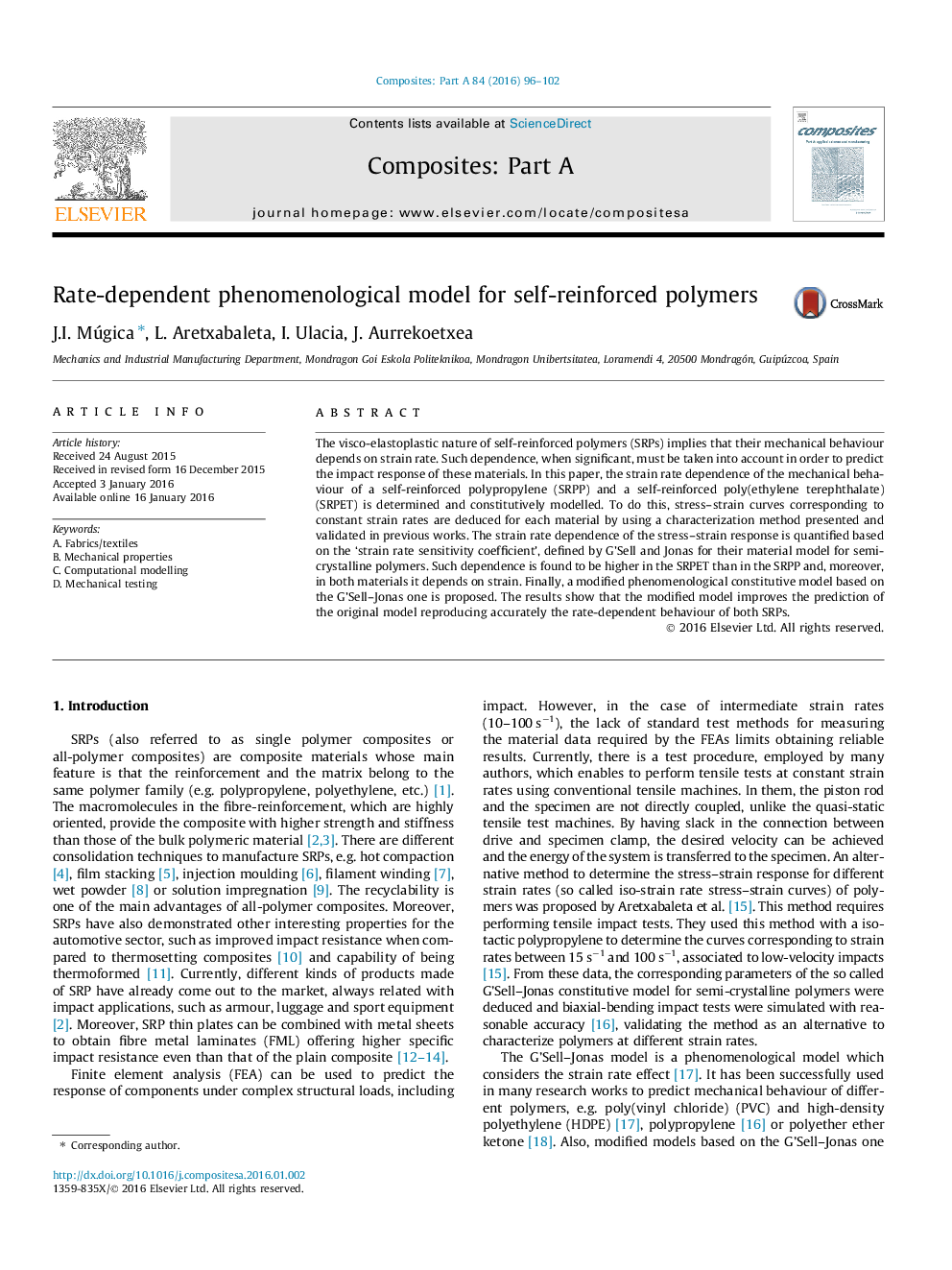| Article ID | Journal | Published Year | Pages | File Type |
|---|---|---|---|---|
| 7890969 | Composites Part A: Applied Science and Manufacturing | 2016 | 7 Pages |
Abstract
The visco-elastoplastic nature of self-reinforced polymers (SRPs) implies that their mechanical behaviour depends on strain rate. Such dependence, when significant, must be taken into account in order to predict the impact response of these materials. In this paper, the strain rate dependence of the mechanical behaviour of a self-reinforced polypropylene (SRPP) and a self-reinforced poly(ethylene terephthalate) (SRPET) is determined and constitutively modelled. To do this, stress-strain curves corresponding to constant strain rates are deduced for each material by using a characterization method presented and validated in previous works. The strain rate dependence of the stress-strain response is quantified based on the 'strain rate sensitivity coefficient', defined by G'Sell and Jonas for their material model for semi-crystalline polymers. Such dependence is found to be higher in the SRPET than in the SRPP and, moreover, in both materials it depends on strain. Finally, a modified phenomenological constitutive model based on the G'Sell-Jonas one is proposed. The results show that the modified model improves the prediction of the original model reproducing accurately the rate-dependent behaviour of both SRPs.
Related Topics
Physical Sciences and Engineering
Materials Science
Ceramics and Composites
Authors
J.I. Múgica, L. Aretxabaleta, I. Ulacia, J. Aurrekoetxea,
